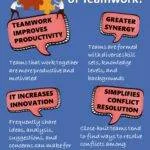
The Power of Metaphors for Creativity
With the Power of Metaphors we can find clarity by using a different situation as a metaphor for a current crisis.
The business world is full of metaphors. Managers have to “think outside the box,” “push the envelope,” and run ideas “up the flagpole.” But how does taking concepts from different contexts affect creativity?
A pair of researchers reviewed some case studies and found that workplaces frequently use metaphors as they implement solutions—and that the use of those metaphors is essential for finding new processes and adapting to new challenges.
- The setup: The researchers reviewed a number of situations in which teams needed to find creative solutions to exceptional problems. In one situation, a team of relief workers needed to turn a church into an emergency shelter to help victims of Hurricane Harvey. The relief workers were church members who had never delivered supplies to victims of a disaster before.
- The results: The volunteers treated the relief effort as similar to a retail supply line; they re-created Walmart’s distribution system. They turned a classroom into a warehouse and gave “customers” 15 minutes each to “shop” for the supplies they needed.
- The takeaway: By identifying a similarity between two different challenges—a retailer’s need to offer goods to customers and a relief effort’s need to deliver supplies to disaster victims—the relief workers were able to innovate an effective solution.
Applying Imitation in Everyday Creativity
The researchers say that their work focuses on everyday creativity: the small acts of problem-solving that people perform every day when they encounter new problems. We meet those challenges, they argue, by looking first for the similarities to a different situation.
Those similarities help us to understand the current problem. We then adapt the solution: ideas, like flags, need to be visible to everyone; conceptual constraints are limits that restrict us like the walls of a box.
We find clarity by using a different situation as a metaphor for a current crisis.
For example, a future client might call one day to say that they’re stuck in traffic and won’t be able to make the meeting. If we think of the client us stuck in a “traffic lockdown,” we’d recognize the problem, understand that face-to-face meetings aren’t always necessary, and resolve the issue by sending them a Zoom invitation that they can accept in a nearby café.
What the researchers have identified is how creativity happens. The source of the metaphor is a situation that we have previously encountered: it’s material that we’ve consumed. To implement a solution, we imitate that solution but then iterate something new to fit the changed context.
So how can businesses use these metaphors deliberately? The researchers recommend that businesses analyze and categorize their everyday challenges to look for hidden patterns.
By “pigeonholing” those challenges, the business will have models it can use to adapt its procedures to fit the new situation. It will then be able to forge ahead and break new ground.
(Reference: https://www.linkedin.com/pulse/power-metaphors-creativity-allen-gannett/)


